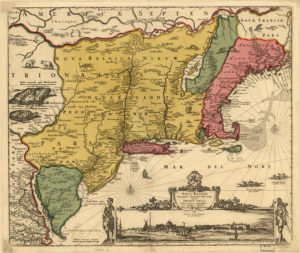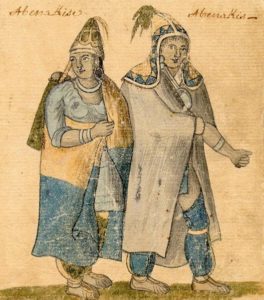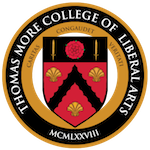I shall be telling this with a sigh
Somewhere ages and ages hence:
Two roads diverged in a wood, and I
I took the one less traveled by,
And that has made all the difference.—Robert Frost, “The Road Not Taken”

It is rather important to consider the place you will go to when you leave for College. If one were to spread open a map of New England in order to find a place without the vexations of the city but with easy access to the cultural attractions of Boston, the coastline of the Atlantic, and the heights of the White Mountains, it would be difficult to find one more central than the site of Thomas More College. The standard maps and the histories, however, fail to reveal the depth of antiquity and the drama of the landscape.
Located in Merrimack, New Hampshire, a small town on the Merrimack River in the southern part of the state, the College is within an hour and a half of almost all major New England cities and only a few hours from Quebec. To our south lie the towns of Lexington, Concord, and Boston—all under an hour’s drive. To our east, one finds the historic harbors of Portsmouth and Kittery, Maine, where John Paul Jones ranged the waters in his ships the Ranger and the America. The rugged White Mountains—the tallest east of the Rockies—are within an hour or two to the north and west, the hiking grounds of students and faculty.

The often-told tale of New Hampshire begins in 1622 with the first of several failed attempts at establishing mercantile plantations along the Merrimack River valley. It was not until the 1720s, however, that permanent colonial settlements took root in the region around our College. In fact, there is an earlier forgotten history of the ground on which our campus rests.
Driven by man’s zeal for exploration and a real need to supply fish for the various penitential days in traditional Christian society, fishing expeditions pushed further and further into the north Atlantic. By the early sixteenth century, the seas from what is now Newfoundland down to Cape Cod were already well-known to daring seamen.
In 1524, the Spanish Crown commissioned Esteban Gomez to explore the coastal areas just to our east. With tweny-nine sailors on his little ship the Anunciada (the Annunciation), Gomez mapped the coast, dubbing the region Tiera Nova de Cortereal (The New Land of the Royal Court)—nearly a century before the Englishman, John Smith, promoted the name “New England.” Gomez sailed into the mouth of the Merrimack, which he christened “Rio de San Antonio” (River of St. Anthony). The French, however, won the race to establish a claim on the region. The first European to receive a legal charter to colonize the region was Pierre Dugua, Sieur de Mont (1558-1628), who came to the area in 1604 to establish his claim for France. The area stretching down the coast of Maine and into the interior of New Hampshire came to be called Acadia and its borders were hotly contested. The natives told Dugua that the river valley was called Merrimack, which in the Algonquin tongues means, “the mighty river valley.”
The principal tribe in whose lands the campus is situated was the Pennacooks, the southern clan of which—the Nashua—converted to the Catholic Faith and lived under the direction of the Jesuit Missions based in Maine. Indeed, from the middle of the Seventeenth Century until the granting of this land to Col. Joseph Blanchard, who built the farmstead that constitutes the core of the campus, the Pennacooks did everything in their power to resist the incursions of the English into the lands west of the Merrimack River.

By 1724, men from Massachusetts and coastal New Hampshire successfully orchestrated a war against the Jesuits and the Indians in the region. The center of Catholicism in New England, the mission at Norridgewock, Maine, was destroyed in August of that year and the Catholic Indians remaining in the region isolated from the spiritual and material allies in French-controlled territory. Fr. Sebestian Rasle, SJ, the spiritual shepherd of the Abenaki and Pennacooks, was martyred along with hundreds of loyal Indians. In 1726, the year Blanchard built his homestead, the last five Pennacooks marched into French Catholic territory near the St. Lawrence, bringing to an end an early chapter of the history of our campus. Whether you call it Rio de San Antonio, Acadia, or the Merrimack Valley, you will find this area thick with traditions and nearly forgotten history for those who have the courage and imagination to look again, as Thomas More College endeavors to do.
